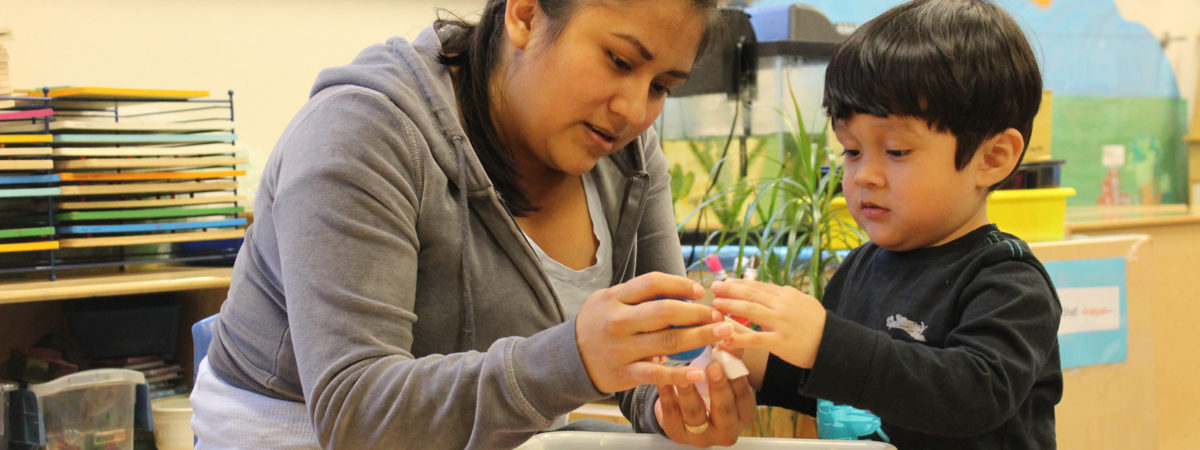Digital Promise and Learning Heroes have teamed up for a special blog series that explores how teachers and families can use technology to work together and facilitate learning for students of all ages. The series centers on the experiences of teachers and parents and provides family-focused tips and resources to support children’s academic progress, social-emotional development, and overall well-being.
Health and safety concerns, digital learning hiccups, and last-minute changes have already made this school year challenging for parents and families. After months of change and uncertainty, many students are feeling the social-emotional and academic toll. A recent study shows that some students may have started the school year as much as a full grade behind in math, while many still lack full access to high-speed internet, a device, and the guidance needed to use them.
These challenges are real. But this school year also provides a unique and important opportunity to do what has always mattered: strengthen partnerships between families and schools. Technology can play a fundamental role in building and maintaining these relationships. With digital tools and resources, teachers, parents, and families can stay connected and support learning in new and exciting ways—anywhere, anytime.
Technology can help students of all ages:
- Get personalized support through customized lessons and feedback from teachers based on individual needs
- Improve understanding through interactive learning environments, including animations, videos, and simulations of concepts
- Stay socially connected and engage in problem-solving and team building activities with classmates, teachers, and even other learners around the world
- Practice critical skills by using tools for organizing, researching, writing, publishing, creating, and more
- Easily access real-world learning materials like video tutorials, primary and secondary sources for research projects, museum collections, historical sites, and digital books, available online and often for free
To get started, here are seven ways that families can support their child’s learning at home. Share these with parents and check out the helpful resource links in each tip.
- Get connected. Many at-home learning activities require a high-speed, reliable internet connection. You can find free or low-cost internet service options in your area using the search tool at EveryoneOn. If you already have service, make sure it can support your family’s increased online activity and that you won’t exceed your data limit (if there is one).
- Read every day. Encourage your child to explore new hobbies and learn more about their interests by reading or listening to audiobooks that are both nonfiction and fiction. As much as possible, read with younger children for at least 20 minutes every day. Older children can also read independently for at least 30 minutes daily. Reading materials can include print or digital books, graphic novels, magazines, and online articles. Ask your local library about access to free digital or audio books.
- Boost vocabulary and knowledge of the world by talking with your child. This will help your child with communication skills and reading. Build conversations around your child’s interests and activities. For example, after watching a TV show or reading a book, ask your child questions about the main idea, the characters, what they learned, and what surprised them.
- Turn everyday (offline) routines, activities, and materials into learning moments. For younger children, practice fractions and measurement while cooking, make bubbles or playdough, write songs together, or explore nature by noticing the changes in trees or neighborhood plants, observing birds, bugs, or other creatures, collecting rocks, and more. For older children, support life skills by making food from family recipes, talking about current or historical events, or practicing public speaking for presentations.
- Focus on key skills. Have your child take this Readiness Check to see how they’re doing with key math and reading skills and to get resources that will help set them up for success this year. Share the results with your child’s teacher(s) to help them see where your child is doing well and where support is needed.
- Let your child show off what they know. After they read or finish an activity, ask them to teach what they’ve learned to you, a family member, or friend, in person or virtually. That way, your child can review important skills, build confidence, and bond with those around them.
- Support life skills that help your child in and out of school. Show your child how to solve problems, learn from mistakes, and communicate well with others, especially during hard moments. Ask your child to help out the family with age-appropriate household chores, like setting the table for dinner, cleaning up after an activity, or feeding a family pet to promote responsibility.
For more tips and resources, sign up for our Action Report and check out our next blog on how teachers and families can work together to support student progress.
